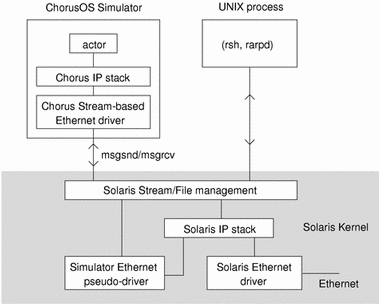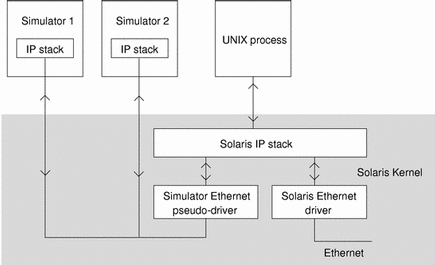Network Architecture
Each simulator on a Solaris host accesses remote machines in the same way that a physical target accesses the outside world: through a network interface. As the network is not directly accessible through a dedicated Ethernet device, a Solaris Ethernet pseudo-driver simulates a specific sub-network, grouping all the simulators running on the same host. In particular, the Ethernet pseudo-driver allows each simulator to:
-
Have its own IP address.
-
Access remote files via NFS.
-
Be accessed with the rsh command.
The pseudo-driver also supports any additional Ethernet-based functionality.
Each simulator interfaces with the Solaris Ethernet pseudo-driver sub-network. All simulator-specific network requests on this sub-network are routed by this driver. Each time a request concerns a host outside this sub-network, the request is forwarded to the host Solaris IP stack to be processed.
Figure 1-3 illustrates the software architecture simulating the network. The Ethernet pseudo-driver manages communication between simulators located on the same host and between simulators and the host.
Figure 1-3 Software Architecture

This mechanism allows simulators to be accessed both from their host and also from any host on the network, after configuring the IP routing information.
Figure 1-4 illustrates the network data flow between simulators and the Ethernet network, with the Solaris IP stack relaying messages between networks.
Figure 1-4 Network Data Flow

- © 2010, Oracle Corporation and/or its affiliates
